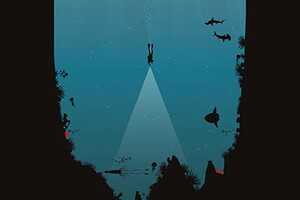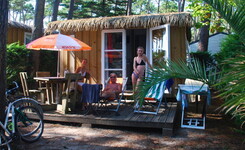20,000 leagues under the sea: the Capbreton gulf, a unique underwater canyon

Just off the coast of Landes, off the Spanish and French coasts, the Gouf de Capbreton is a real geological curiosity. It is one of the few underwater canyons in the world to be connected to the coast. Ready to dive with us?
A RARE GEOLOGICAL PHENOMENON
Located off the coast of Capbreton and Hossegor, 300 metres from the mainland, the Gouf de Capbreton is a long, winding underwater valley that descends to abysmal depths of 4,000 metres and more. Formed by plate tectonics in the extension of the Pyrenean fault, 15 million years ago, it is one of the deepest marine canyons in the world, comparable to the Grand Canyon of Colorado in its dimensions. Both straight and meandering, this invisible geological jewel stretches for 300 km to the coast of Santander in Spain.
THE SOURCE OF ONE OF THE MOST BEAUTIFUL WAVES FOR SURFERS
The Landes Gouf begins just a few hundred metres from the coast, between the Capbreton pier and the beach at Hossegor. The rapid rise of the sea bed gives birth to the most famous wave of the Landes coast: the mythical wave of La Nord, in Hossegor. The spot is world-famous among surfers and hosts the Rip Curl Challenge, one of the most famous surfing competitions in the South West.
AN UNDERWATER FJORD RICH IN FISH
The Gouf has always been a source of interest for the fishermen of Capbreton, the only fishing port in the Landes. The meandering Gouf attracts many species that are unusual in the southern Bay of Biscay, including pelagic fish (tuna, bonito, anchovy), rock fish (red mullet, gurnard, scorpion fish), cephalopods (squid, chipirons, octopus) and crustaceans. You can see this great diversity of species caught by strolling through the Capbreton fish market.
SHARKS, DOLPHINS AND EVEN WHALES
This natural refuge on the high seas is also home to rarer animal species and marine mammals, some of which are quite astonishing. Thus, it is common to come across different species of sharks (mako shark, hammerhead shark, basking shark...), Risso's dolphins, pygmy sperm whales, Cuvier's beaked whales or Blainville's beaked whales, whose natural habitat is located near the islands of Hawaii and the Bahamas
Also read: "Watching dolphins in the Landes during a sea trip from Capbreton
AN ABYSSAL FAUNA THAT IS SOMETIMES MYSTERIOUS
In addition to diving cetaceans and abyssal sharks, the abysses of the Gouf are also home to strange, even fantastic marine creatures, such as the legendary giant squid (Architeuthis dux). This sea monster, which makes sailors tremble, is said to live in the abysses of the Gulfs, at a depth of around 1,500 metres, where the light is more diffuse.
THE GOUF DAYS
Want to know more about this unique place in the world? Since 2015, the town of Capbreton has organised a Gouf Day every two years in September, as part of the Heritage Days. This is an opportunity to learn more about this treasure of biodiversity that we must all protect. On the programme: conferences and debates with scientists and historians, screenings, meetings and guided walks with fishermen, surfers and artists.




